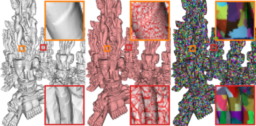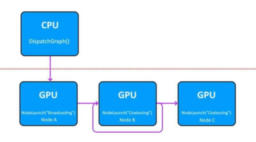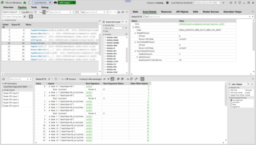- the paper introduces a method that enables micro-poly geometry for raytracing workloads
- geometry is preprocessed, clusters formed and simplified into a compressed hierarchical level of detail representation
- presents how using clusters enables fast BVH building
- in the appendix discusses in detail how to select clusters to be guaranteed crack-free between different clusters

- the blog post announces the first public release of a new D3D12 feature called Work Graphs
- shows how this feature enables GPU shaders to spawn further GPU work from the GPU timeline
- presents an overview of the spec
- additionally, it discusses which samples are available at this time

- the AMD guide provides a more in-depth look at the practical use of D3D12 Work Graphs
- presents how to get started and the building blocks of the programming model
- additionally, it presents a section on tips & tricks to help during the development (guides for tracking down issues, best practices, etc.)

- the blog post announces support for the new d3d12 work graphs feature in the preview version
- shows the first level of debug support and discusses what is coming in the future

- another part of the glTF rendering series
- part focuses on how to interpret the scene hierarchy and flatten it for rendering

- the video tutorial presents a walkthrough on the integration of a real-time fluid simulation
- shows how the physical model is translated into shader code
- implementation is shown using Unity C# and shader code

Thanks to Erika for support of this series.
Would you like to see your name here too? Become a Patreon of this series.